St. Maria in Lyskirchen: A treasure of medieval frescoes in Cologne
St. Maria in Lyskirchen is the smallest of Cologne’s twelve Romanesque churches but holds great historical and artistic significance. It is situated in the southern part of the city’s Altstadt district, right at the Rhine River. Built between 1198 and 1225, the church’s structure is that of a three-aisled basilica, closely modeled after St. Kunibert, one of Cologne’s larger Romanesque churches. What distinguishes St. Maria in Lyskirchen from the other Romanesque churches is the well-preserved medieval frescoes from the 13th century and the reverence of the Schiffermadonna (Sailor’s Madonna). The name ‘Lyskirchen’ likely originates from a nobleman named Lysolvus or Lisolfus, who founded the original church as a private chapel. Today, both the church and its adjacent buildings, including the sacristy and sexton’s house, are listed as protected monuments. In October 2024, I was able to visit the church. Here is a summary of my impressions and what I could find out about its historical background so far.
 St. Maria in Lyskirchen as seen from the street “An Lyskirchen”.
St. Maria in Lyskirchen as seen from the street “An Lyskirchen”.
Historical background
 West portal. In the upper part of the portal, the high water mark of the ‘ice flood’ (‘Eisflut’) of February 28, 1784 is indicated.
West portal. In the upper part of the portal, the high water mark of the ‘ice flood’ (‘Eisflut’) of February 28, 1784 is indicated.
Early history and foundation
The history of St. Maria in Lyskirchen dates back to the early Christian period in Cologne. According to legend, the church was founded as early as the 4th century by Bishop Maternus, marking it as one of the city’s earliest Christian sites. The first concrete record of a chapel here, however, appears in 948, described as a simple private church likely established by a nobleman named Lysolvus or Lisolvus. This private chapel, initially referred to as ‘Lisolfikyrken’, later evolved into the name ‘Lyskirchen’’, which has persisted for centuries.
 Former rose window on the west facade. Today, the window is bricked up.
Former rose window on the west facade. Today, the window is bricked up.
Medieval development and architectural transformation
The church gained a significant status in 1067 when Archbishop Anno II incorporated it into the collegiate foundation of St. Georg, thus raising its importance as a parish church. During this period, the church was known as St. Maria in Noithusen, serving the local fishing village south of Cologne’s city wall. By 1106, when the city expanded its fortifications, the church was included within Cologne’s walls, providing a spiritual hub for sailors, fishermen, and local residents. In the 12th century, the church likely underwent a significant transformation, transitioning from a single-aisled structure to a three-aisled basilica, reflecting the growing influence and wealth of Cologne as a city.
Between 1198 and 1225, the church reached its current form, characterized by a vaulted structure and an elevated east choir flanked by a twin-tower design inspired by St. Kunibert and St. Severin. Due to financial constraints, however, only the northern tower was ever fully completed. Built on raised ground to protect against the frequent Rhine floods, St. Maria in Lyskirchen became an architectural statement within the Romanesque style, incorporating a distinctive blend of regional influences while emphasizing the church’s connection to Cologne’s riverside heritage.

 Capitals of the west portal, decorated with lion heads.
Capitals of the west portal, decorated with lion heads.
 Column capital painting in the interior.
Column capital painting in the interior.
Renaissance and baroque modifications
In the 16th century, several Gothic elements, such as pointed-arch windows, were added, and by the 17th century, the interior saw further modifications to keep pace with stylistic trends. The Renaissance also left its mark on the church: in the 1658-1662 renovations, the church’s apse was elevated and fitted with larger Gothic-style windows, altering its original Romanesque form. The baroque high altar was installed in 1663-1665, adding further decorative elements to the church’s evolving design.
 Yard of the church. The building on the left side could be the rectory?
Yard of the church. The building on the left side could be the rectory?
The church’s position near the Rhine made it vulnerable to frequent floods, and in 1784, a particularly devastating flood destroyed parts of its interior. Following the secularization of the St. Georg foundation in 1804, St. Maria in Lyskirchen was designated as a parish church, and several restorations were undertaken. In the late 19th century, extensive renovations aimed to unify the church’s appearance in the Romanesque style, culminating in a redesign of the west façade and restoration of medieval frescoes from the 13th century. The frescoes, discovered beneath layers of plaster, were carefully restored by the painter Matthias Goebbels, who added his own touches in a historicist style.
 St. Maria in Lyskirchen as seen from the Rhine river bank (‘Am Leystapel’).
St. Maria in Lyskirchen as seen from the Rhine river bank (‘Am Leystapel’).
20th-century challenges and restoration
The 20th century brought further challenges and transformations. World War II bombing raids in 1942-43 caused severe damage, collapsing much of the roof and the vault over the gallery, though the main nave’s vault and its frescoes remained largely intact. Reconstruction efforts began in 1947, with a renewed focus on restoring the church to its medieval design. Between 1972 and 1977, additional conservation work on the frescoes aimed to remove later over-paintings, restoring them to their medieval appearance.
 View of St. Maria Lyskirchen from the Malakoff Tower, 1943. Bomb damage to the roof is clearly visible.
View of St. Maria Lyskirchen from the Malakoff Tower, 1943. Bomb damage to the roof is clearly visible.
In the 1980s, the church’s exterior was re-plastered in its original Romanesque color scheme of pink, gray, and white. Listed as a historic monument along with the sacristy and sexton’s house, St. Maria in Lyskirchen is symbolic of Cologne’s layered history, capturing the city’s medieval past and its religious and cultural significance.
Architectural and artistic highlights
St. Maria in Lyskirchen is characterized by its distinctive Romanesque design. Though relatively small, the church displays typical features of Romanesque architecture from the Staufer period (12th century), such as the vaulted ceilings, the three-aisled layout, and the elevated eastern section. The original plan included two towers on the east side, but only the northern tower was completed. The overall design reflects influences from other Romanesque churches in Cologne, including St. Kunibert and St. Aposteln.

Floor plan of St. Maria Lyskirchen from 1840. Source: Wikimedia Commons (license: CC BY 4.0)
One of the church’s most prominent features is its elaborate west portal (see image above), which is adorned with a decorative blind arch framed by a garland. This portal is one of the most ornately designed among Cologne’s Romanesque churches. Additionally, the church’s proximity to the Rhine led to the placement of a high-water mark on the west façade, recording the flood level from the “Eisflut” of 1784.
Interior and frescoes
The interior of St. Maria in Lyskirchen reveals its true artistic treasures. Most notable are the well-preserved medieval frescoes, which date back to the 13th century. These frescoes, which survived the devastation of World War II, are arranged in a narrative sequence that spans three bays of the central nave. The frescoes are paired thematically, with scenes from the Old Testament on the northern wall and corresponding scenes from the New Testament on the southern wall. This arrangement underscores the medieval Christian belief in the prophetic foreshadowing of the New Testament by the Old Testament.
 Frescos of the vault (1250): North scenes from the Old Testament, south from the New Testament.
Frescos of the vault (1250): North scenes from the Old Testament, south from the New Testament.
 View to the back of the nave, with the organ in the upper gallery and the frescoes on the ceiling.
View to the back of the nave, with the organ in the upper gallery and the frescoes on the ceiling.
Nave and impressions from the interior
Here are some general impressions from the interior of the church. The shady light engulfs the main space of the church, creating a serene atmosphere that invites for contemplation and transcends a feeling of timelessness. It indeed gives a glimpse of the atmosphere of an medieval church. While electric lighting is present, the main light source is natural light from the windows, which filters through the stained glass and illuminates the frescoes and the overall space.
 Upper gallery and frescos on the ceiling.
Upper gallery and frescos on the ceiling.
 Baroque porch, with doors dating from 1616. Fresco (1230) above the porch: the Adoration of the three Magi. Jesus sitting on the lap of his mother who is crowned in heaven. At the right hand side two prophets (Jeremiah and Isaiah?).
Baroque porch, with doors dating from 1616. Fresco (1230) above the porch: the Adoration of the three Magi. Jesus sitting on the lap of his mother who is crowned in heaven. At the right hand side two prophets (Jeremiah and Isaiah?).
 View towards the north tower chapel.
View towards the north tower chapel.
 View into nave from the north tower chapel.
View into nave from the north tower chapel.
 View of the nave from back of the church.
View of the nave from back of the church.
 Staircase to the upper gallery.
Staircase to the upper gallery.
 Stained glass window in one of the tower chapels.
Stained glass window in one of the tower chapels.
Choir
The choir features a high altar by Elmar Hillebrand from 1955-1958, replacing the former baroque altar (I couldn’t find out what happened to the latter). The modern altar features a tabernacle, known as ‘The Ivory Tower’, and is inscribed with invocations from Mary’s Litany.
 High altar by Elmar Hillebrand (1955/58).
High altar by Elmar Hillebrand (1955/58).
 High altar by Elmar Hillebrand (1955/58).
High altar by Elmar Hillebrand (1955/58).
 High altar by Elmar Hillebrand (1955/58).
High altar by Elmar Hillebrand (1955/58).
Stained glass
St. Maria in Lyksirchen features several stained glass windows, some of which date back to the early 16th century. The windows depict various religious scenes, including the Crucifixion, the Annunciation, Mary mother of Jesus, and other saints. The stained glass windows filter the natural light, creating both a colorful and shady atmosphere inside the overall dark church.
 Stained glass with Annunciation scene and Mary holding the infant Jesus.
Stained glass with Annunciation scene and Mary holding the infant Jesus.
 Stained glass with Crucifixion scene.
Stained glass with Crucifixion scene.
 Reflections of a stained glass window in the altar of the south tower chapel (Chapel of St. Nicholas).
Reflections of a stained glass window in the altar of the south tower chapel (Chapel of St. Nicholas).
 Stained glass, illuminated by the sun.
Stained glass, illuminated by the sun.
Frescoes in the side chapels
The frescoes in the side chapels, completed around 1270-1280, depict the lives of St. Nicholas of Myra and St. Catherine of Alexandria. These frescoes, especially those in the southern chapel, represent some of the finest examples of medieval religious art in Cologne.
 Frescos in the south tower chapel (Chapel of St. Nicholas) from 1270.
Frescos in the south tower chapel (Chapel of St. Nicholas) from 1270.
South tower chapel
The frescos in the south tower chapel, also called Chapel of St. Nicholas, show scenes from the life of St. Nicholas of Myra:
 Frescos in the south tower chapel (Chapel of St. Nicholas), showing scenes from the life of St. Nicholas of Myra (about 1270).
Frescos in the south tower chapel (Chapel of St. Nicholas), showing scenes from the life of St. Nicholas of Myra (about 1270).



 Frescos in the south tower chapel (details).
Frescos in the south tower chapel (details).
North tower chapel
The frescos in the vault of the north tower chapel, also called Chapel of St. Catherine, show scenes from the life of St Catherine of Alexandria:
 Frescos in the north tower chapel (Chapel of St. Catherine), showing scenes from the life of St Catherine of Alexandria (about 1280).
Frescos in the north tower chapel (Chapel of St. Catherine), showing scenes from the life of St Catherine of Alexandria (about 1280).



 Frescos in the north tower chapel (details).
Frescos in the north tower chapel (details).
Schiffermadonna
The Schiffermadonna is a key feature of St. Maria in Lyskirchen. This large statue of the Madonna and Child, carved around 1410-1420, stands over two meters tall and is crafted in the soft, flowing style of the Bohemian school. The statue is renowned for its delicate drapery and the tender interaction between the Madonna and the Christ Child, who holds an apple symbolizing redemption. Though originally placed outside the church, the statue is now displayed inside, and its association with sailors and fishermen remains a key aspect of the church’s identity.
 ‘Schiffermadonna’ as seen from the North tower chapel.
‘Schiffermadonna’ as seen from the North tower chapel.
The background of the Schiffermadonna is a mural by Peter Hecker from 1830, showing boatmen on the Rhine greeting the madonna of Lyskirchen.
 ‘Schiffermadonna’ (Boatmen’s Madonna, about 1420) in front of a mural by Peter Hecker (1830) showing boatmen on the Rhine greeting the madonna of Lyskirchen.
‘Schiffermadonna’ (Boatmen’s Madonna, about 1420) in front of a mural by Peter Hecker (1830) showing boatmen on the Rhine greeting the madonna of Lyskirchen.
Sculptures and other art
The church holds several sculptures other significant works of art.
St. Judas Thaddäus
St. Judas Thaddäus, a wooden statue from the beginning of the 20th century, is located in the north tower chapel.
 St. Judas Thaddäus (beginning of the 20th century).
St. Judas Thaddäus (beginning of the 20th century).
St. Maternus
St. Maternus, the first bishop of Cologne, is represented by a wooden statue from the 17th century, likely from the workshop of Jeremias Geisselbrunn.
 St. Maternus, first bishop of Cologne, wooden statue (17th century) probably from the workshop of Jeremias Geisselbrunn.
St. Maternus, first bishop of Cologne, wooden statue (17th century) probably from the workshop of Jeremias Geisselbrunn.
Madonna
The Madonna, a 14th-century statue known as the ‘Goldfinch Madonna’, is a particularly striking piece. The goldfinch held by the baby Jesus is a symbol of his Passion.
 ‘The Goldfinch Madonna’ (14th century).
‘The Goldfinch Madonna’ (14th century).
 ‘The Goldfinch Madonna’ (detail).
‘The Goldfinch Madonna’ (detail).
Cross
A cross from the beginning of the 20th century is displayed in the church, carrying on a dialogue with a painting by Jörg Frank from 2007.
 Cross (beginning of the 20th century) carrying on a dialogue with a painting by Jörg Frank (2007).
Cross (beginning of the 20th century) carrying on a dialogue with a painting by Jörg Frank (2007).
Entombment of Christ
The Entombment of Christ is part of an altarpiece from about 1630, a copy of the original by Federico Barocci for the high altar of St Maria Lyskirchen.
 Altarpiece: Entombement of Christ (about 1630), copy from the original by Federico Barocci for the high altar of St Maria Lyskirchen.
Altarpiece: Entombement of Christ (about 1630), copy from the original by Federico Barocci for the high altar of St Maria Lyskirchen.
Annunciation
The Annunciation is part of an altarpiece from the Servitin Convent of St Lucia, dating from the 17th century.
 Altarpiece: annunciation (17th century) from the Servitin Convent of St Lucia
Altarpiece: annunciation (17th century) from the Servitin Convent of St Lucia
Stalls
Furniture in the church includes stalls from the convent of the Servitins at St. Lucia, dating from around 1520.

 Stalls (about 1520) from the convent of the Servitins at St. Lucia.
Stalls (about 1520) from the convent of the Servitins at St. Lucia.
Side altars
St. Maria in Lyskirchen features three significant altars in its side chapels.
North aisle altar
The altar in the north aisle actually consists of two altars. The lower alta was created in 1896 and features the monogram of Christ (Chi-Rho) flanked by the alpha and omega letters. The upper altar, known as the Altar of Lamentation, displays a retable with a copy of the ‘Lamentation of Christ’ by Caspar B. Beckenkamp (1816), which is a copy of the original by Joos van Cleef (1524). The retable, also from 1896, shows a tabernacle with the lamb and the banner of victory on the book with the seven seals, symbolizing Christ’s victory over death and his role as the judge on Doomsday.
 The two altars in the north aisle from 1896 and 1816.
The two altars in the north aisle from 1896 and 1816.
 The upper altar, known as the Altar of Lamentation (a copy from 1816 of the original by Joos van Cleef, 1524) is triptych with the central panel showing the ‘Lamentation of Christ’.
The upper altar, known as the Altar of Lamentation (a copy from 1816 of the original by Joos van Cleef, 1524) is triptych with the central panel showing the ‘Lamentation of Christ’.
 Left side panel of the Altar of Lamentation.
Left side panel of the Altar of Lamentation.
 Right side panel of the Altar of Lamentation.
Right side panel of the Altar of Lamentation.
 Detail of the lower altar, showing the lamb with the banner of victory on the book with the seven seals.
Detail of the lower altar, showing the lamb with the banner of victory on the book with the seven seals.
 Detail of the lower altar, showing the Christ monogram (PX) with alpha and omega.
Detail of the lower altar, showing the Christ monogram (PX) with alpha and omega.
 Topping ornaments of the upper altar
Topping ornaments of the upper altar
 The other side of the right panel of the upper altar.
The other side of the right panel of the upper altar.
Altar and retable in the north tower chapel
The north tower chapel, also known as the Chapel of St. Catherine, features an altar and retable from 1895 and 1897, respectively. The altar depicts the Lamb of God with the banner of victory, symbolizing Christ’s victory over death. The retable includes an altarpiece showing the crucifixion of Jesus, a Pieta from around 1480, an angel from the 19th century, and banners with the beatitudes.
 Altar and retable in the north tower chapel (Chapel of St. Catherine).
Altar and retable in the north tower chapel (Chapel of St. Catherine).
 Altar from 1895 with the Lamb of God with the banner of victory (symbol of the Lord who was crucified innocently, has risen and gained the victory over death).
Altar from 1895 with the Lamb of God with the banner of victory (symbol of the Lord who was crucified innocently, has risen and gained the victory over death).
 Retable with the Pieta from about 1480. the beatitudes.
Retable with the Pieta from about 1480. the beatitudes.
 Retable from 1897 with an altarpiece showing the crucifixion of Jesus, the lonely man crucified (17th century). At the sides: Angels and banners with the beatitudes from the 19th century.
Retable from 1897 with an altarpiece showing the crucifixion of Jesus, the lonely man crucified (17th century). At the sides: Angels and banners with the beatitudes from the 19th century.
Altar and retable in the south tower chapel
Like the other two altars, the south tower chapel, also known as the Chapel of St. Nicholas, features an altar and retable from 1895 and 1897, respectively. The altar depicts the pelican lamb giving his blood for his children, symbolizing Christ’s sacrifice on the cross. The retable includes an altarpiece showing the holy kinship from around 1666, as well as figures of saints from the 19th century, including St. Helen and St. Catherine of Alexandria.
 Altar and retable in the south tower chapel (Chapel of St. Nicholas).
Altar and retable in the south tower chapel (Chapel of St. Nicholas).
 Retable from 1897; altarpiece: holy kinship (about 1666); at the side, figures of saints (19th century: St. Helen (right) and St. Catherine of Alexandria (left).
Retable from 1897; altarpiece: holy kinship (about 1666); at the side, figures of saints (19th century: St. Helen (right) and St. Catherine of Alexandria (left).
 Lower altar from 1895 with the pelican lamb giving his blood for his children (symbol of Christ dying for the people on the cross).
Lower altar from 1895 with the pelican lamb giving his blood for his children (symbol of Christ dying for the people on the cross).
Treasures
Secured in glass cabinets, the church’s treasures include a tray for Holy Mass with small jugs for wine and water (1737), a chalice with the apostles (1695), a monstrance (about 1763), and a vessel for the oil used in the rite of unction (about 1500).
 View into the nave. At the right side, one of the glass cabinets with liturgical vessels.
View into the nave. At the right side, one of the glass cabinets with liturgical vessels.
 Vessel for the oil for the rite of unction (about 1500).
Vessel for the oil for the rite of unction (about 1500).
 Tray for Holy Mass with small jugs for wine and water (1737), and chalice with the apostles (1695)
Tray for Holy Mass with small jugs for wine and water (1737), and chalice with the apostles (1695)
 Processional cross? (silver?, date unknown).
Processional cross? (silver?, date unknown).
Pulpit
The pulpit, dating from 1880, features engraved scenes showing Christ teaching and healing, including depictions of Jesus and Nicodemus, Jesus and the Samar:
 Pulpit from 1880, with the chapel in south tower in the right background.
Pulpit from 1880, with the chapel in south tower in the right background.
 Scene engrave on the pulpit: Jesus and Nicodemus.
Scene engrave on the pulpit: Jesus and Nicodemus.
 Scene engrave on the pulpit: Jesus and the Samaritan woman at Jacob’s well.
Scene engrave on the pulpit: Jesus and the Samaritan woman at Jacob’s well.
 Scene engrave on the pulpit: The healing of a blind man.
Scene engrave on the pulpit: The healing of a blind man.
 Scene engrave on the pulpit: Jesus with Martha and Mary.
Scene engrave on the pulpit: Jesus with Martha and Mary.
Baptismal font
The baptismal font, dating from the 12th century, is built in the octagon form. Its copper-gilded cover is of later origin, from the 17th century. Over the font, four stone figures from the historical high altar (1860) are displayed, showing Nicholas, Peter, Paul, and Maternus (the first bishop of Cologne, ?-328).
 View of the baptismal font and four stone figures.
View of the baptismal font and four stone figures.
 View of the baptismal font and four stone figures.
View of the baptismal font and four stone figures.
 Stone figures from the historical high altar (1860), showing Nicholas, Peter, Paul and Maternus.
Stone figures from the historical high altar (1860), showing Nicholas, Peter, Paul and Maternus.
Conclusion
St. Maria in Lyskirchen may be the smallest of Cologne’s twelve Romanesque churches, but its rich history, artistic heritage, and intimate connection to the city’s past make it a treasure among Cologne’s religious buildings. From its medieval frescoes to its symbolic Schiffermadonna, the church offers visitors a glimpse into the religious life of Cologne’s past, while its careful restoration ensures that its artistic and architectural legacy endures. In my opinion, St. Maria in Lyskirchen is a hidden gem that showcases the beauty and significance of Cologne’s medieval heritage, inviting visitors to explore its historical layers and experience the contemplative atmosphere of this unique place.
References and further reading
- Wikipedia article on St. Maria in Lyskirchenꜛ
- Website of St. Maria in Lyskirchenꜛ
- Matthias Schnegg, Benjamin Marx, Sankt Maria in Lyskirchen – A short guide, handout in the church
- Manfred Becker-Huberti, Günter A. Menne, Die Kölner Kirchen, 2004, J. P. Bachem Verlag, ISBN: 3-7616-1731-3
- Jürgen Kaiser, Florian Monheim, Die großen romanischen Kirchen in Köln, 2017, Greven Verlag, ISBN: 9783774306875
- Ulrich Krings, Otmar Schwab, Köln, die romanischen Kirchen - Zerstörung und Wiederherstellung, 2007, Bachem, ISBN: 9783761619643
- Hiltrud Kier, Die Romanischen Kirchen in Köln, 2014, Hrsg.: Förderverein Romanische Kirchen Köln e. V. 2. Auflage, ISBN: 978-3-7616-2842-3













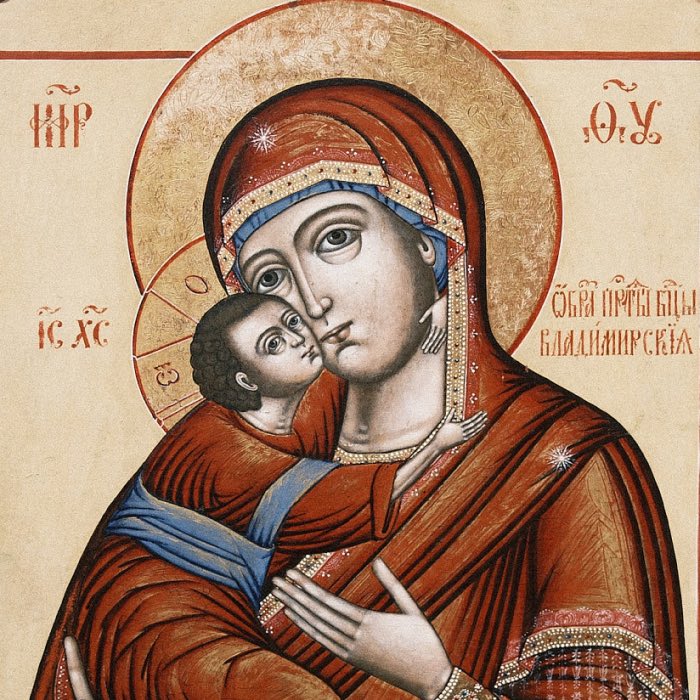
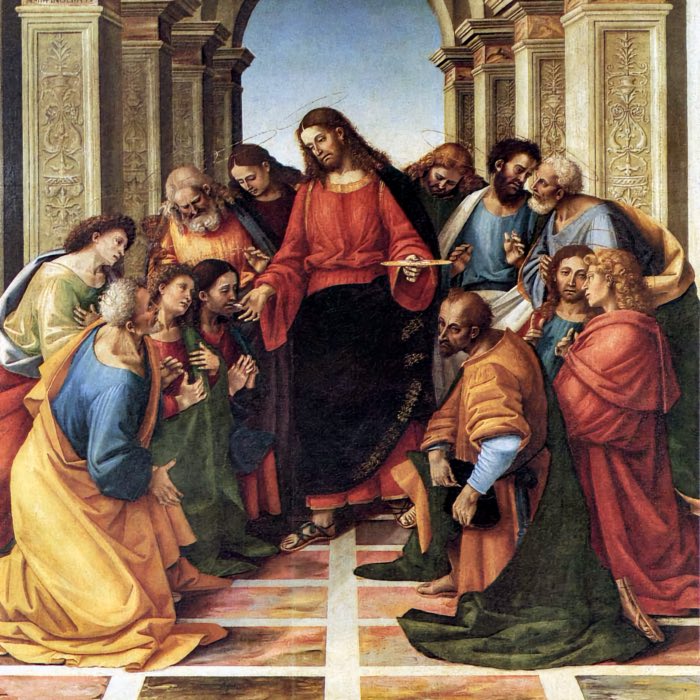
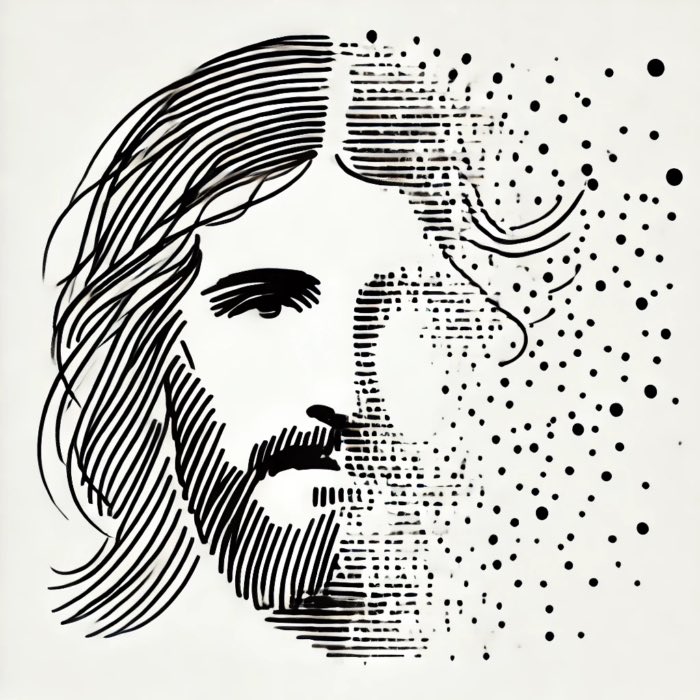
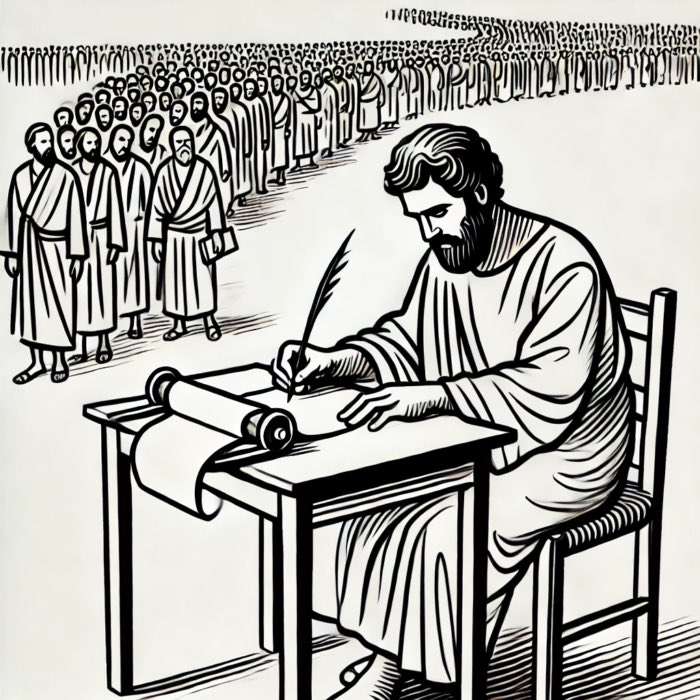

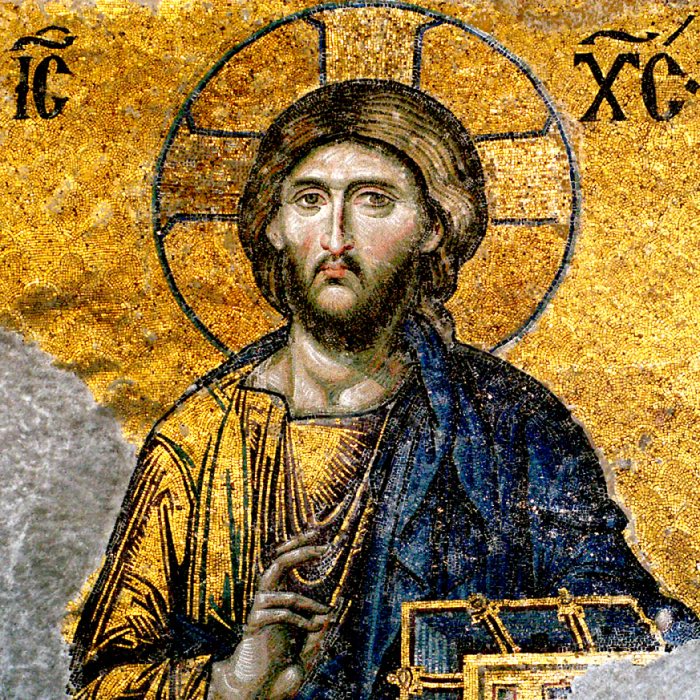
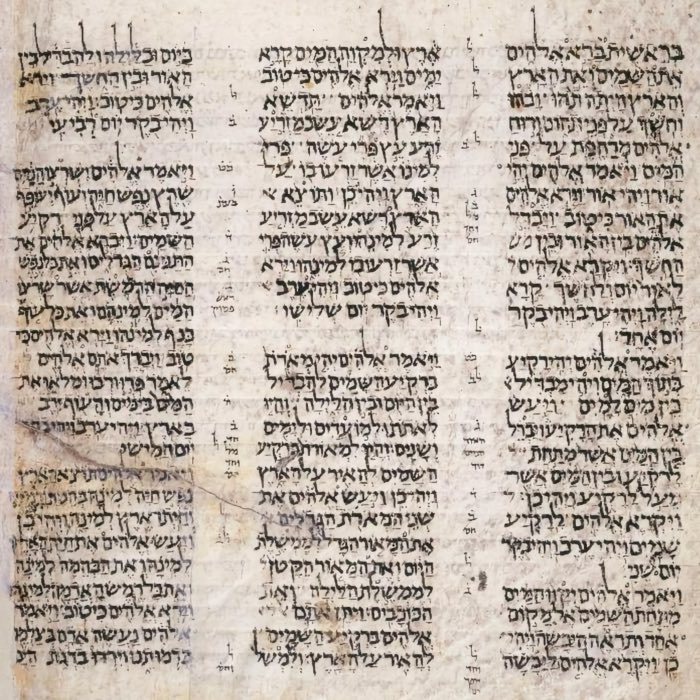
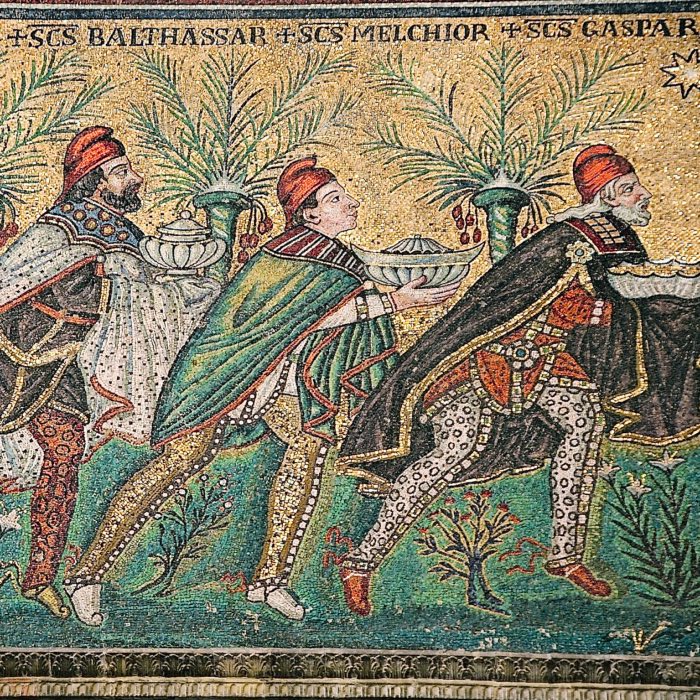
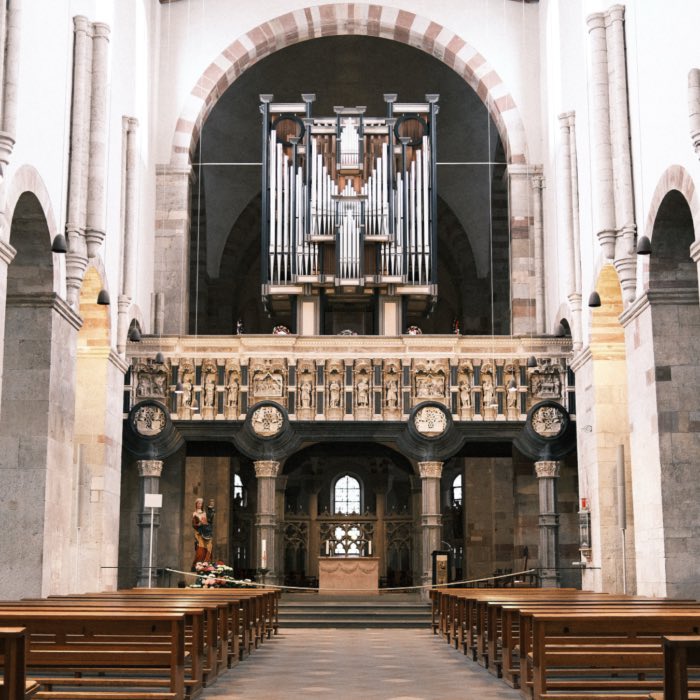
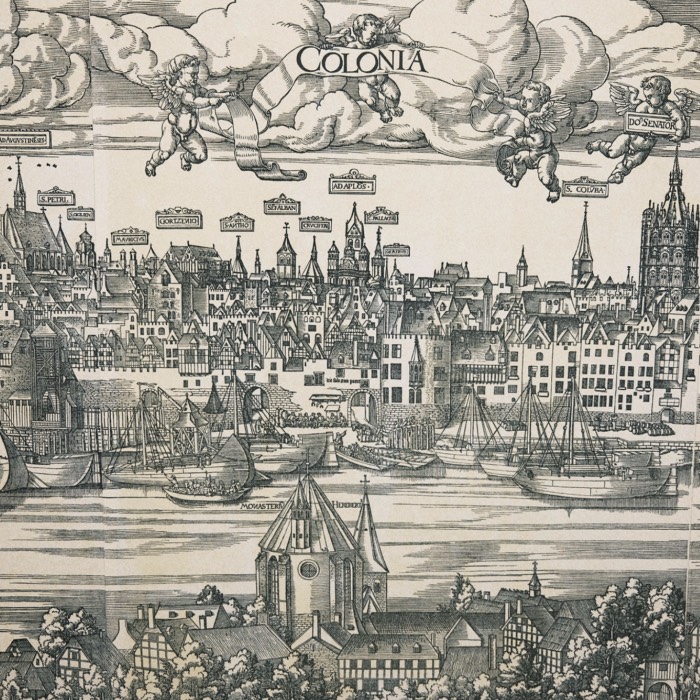
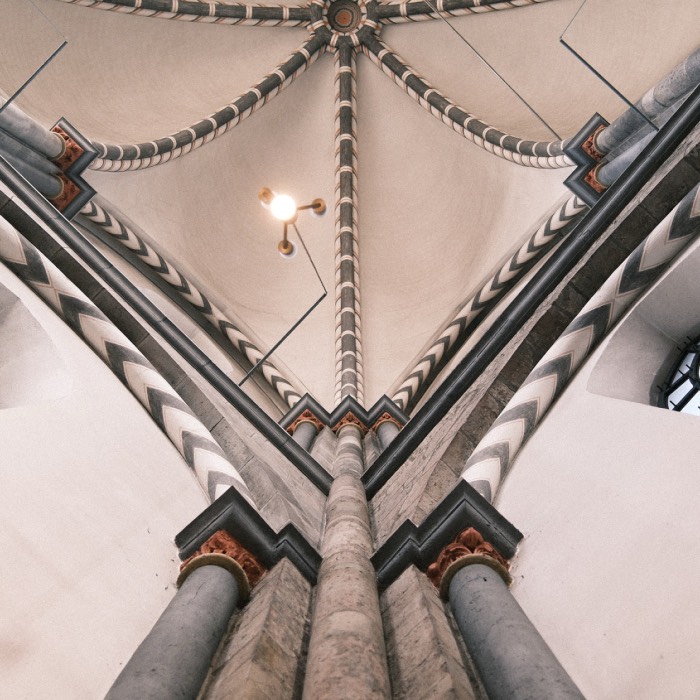
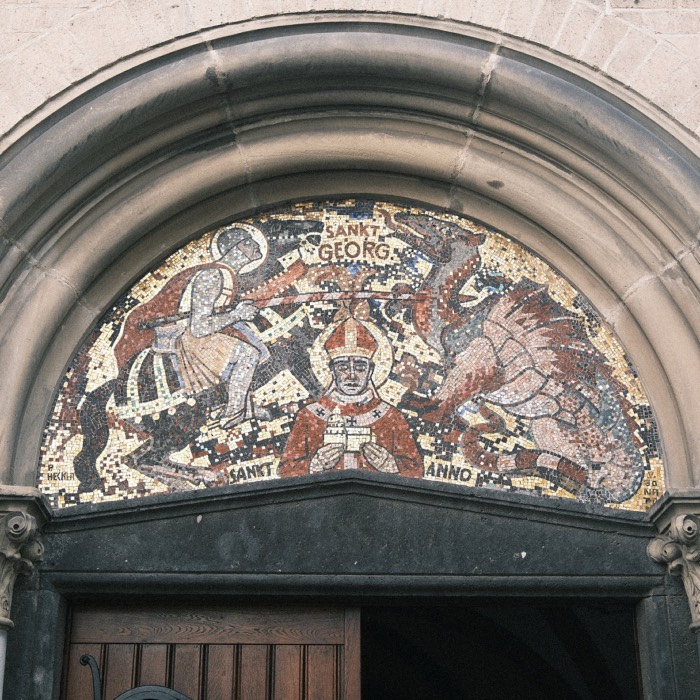
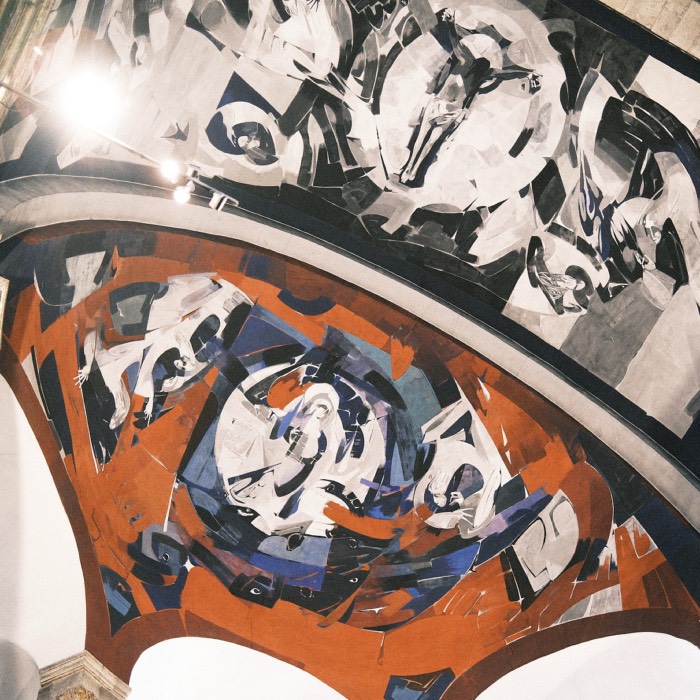



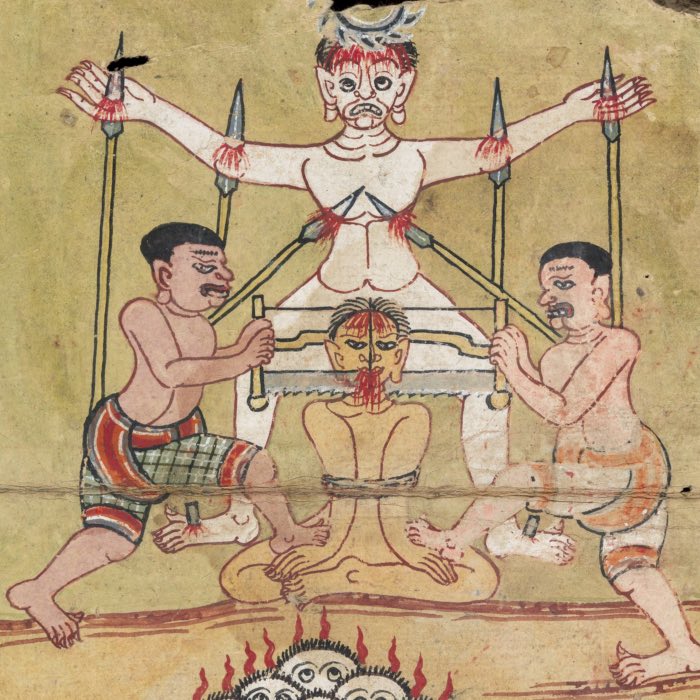

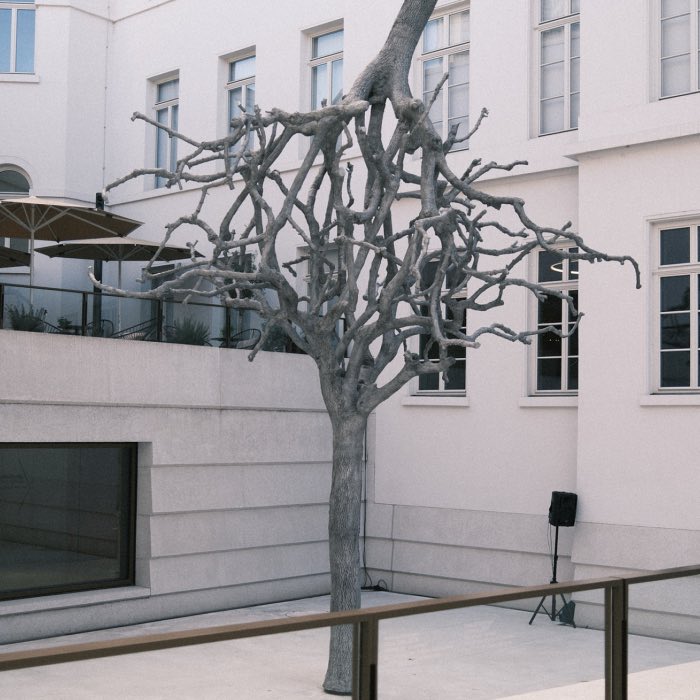

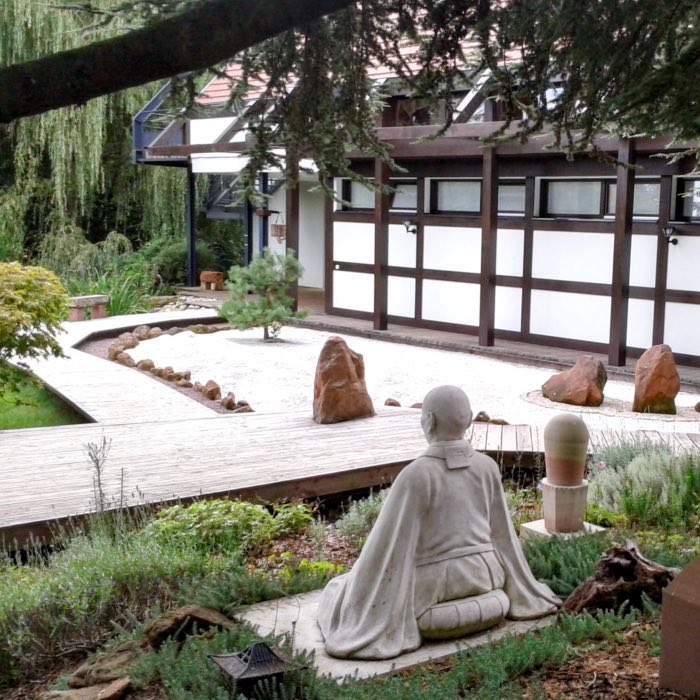
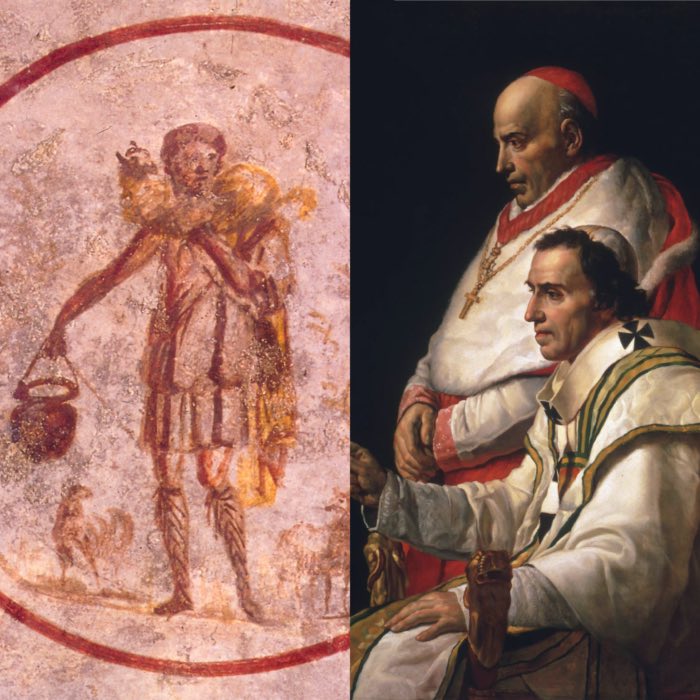
comments